Laurens De Geyter on recreating old style moviemaking for Archie

The ITV series Archie follows the life and career of Archibald Leach, from his poverty-stricken upbringing in Bristol to his glamourous years as Hollywood heartthrob Cary Grant. Archie opens with one of Cary Grant’s final stage appearances in which he discusses his career in detail, leading to a series of flashbacks of events throughout his life. All four episodes were captured by Laurens De Geyter.
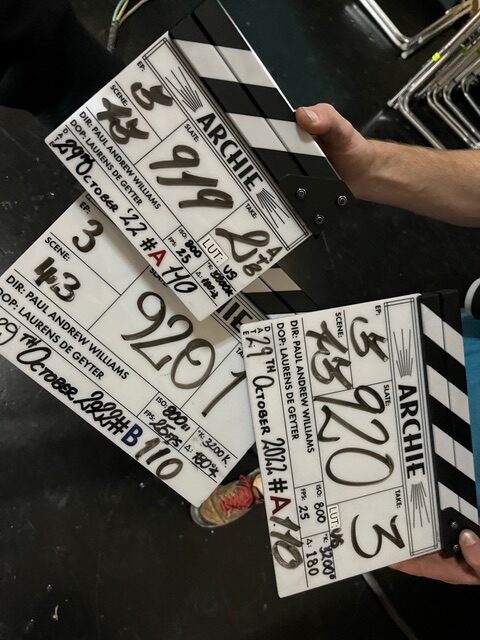
De Geyter began his career as a grip, working on lots of commercials and collaborating with a wide range of DPs. “I worked with Nicolas Karakatsanis on shorts and music videos when we were a really small crew and I was one of the two helpers,” De Geyter begins. “At one point, I got offered a commercial because I was doing shorts at the time as DP, while I was also working as a grip. I told myself I wouldn’t work for the same production company anymore. Then, I got to do my first TV show called Vermist and that was on season 7, but it was great for me to do. From there on the jobs came in and I continued working. Through the director of that series, I got my first UK job which was Riviera. I did a couple of jobs in Belgium before that and one of them was selected at Cannes and because of that I could do the UK job.”
De Geyter landed Archie due to his connection with Rebecca Hodgson, producer of The Irregulars which he had previously worked on. “Rebecca also produced Archie and she put me in touch with the director Paul Andrew Williams. We had a chat and I got the job. Paul is a very particular kind of director that doesn’t communicate a lot up front. In the beginning, I had to get to know him and the way that he works. I had to make a lot of decisions on my own. Maybe Paul had bad experiences with DPs previously, but we had to grow together and watch each other during prep. During recces I ordered film stock and cranes and he always just said yes. Once we started shooting, he really used everything that I brought on and had foreseen on set. Also, the production team was really behind me and said they’d get anything I needed. So, for me it was also liberating to shoot like that. Within limits of course. I couldn’t shoot the whole thing on 35, but I could shoot certain parts on 16 and 8mm.”
De Geyter looked at lots of references, notably Hitchcock movies and the films recreated throughout Archie. “The way Hitchcock tells a story, we tried to translate into Archie,” explains De Geyter. “We also had to reproduce some movies and then we tried to make the light exactly the same and make-up and hair made exactly the same. Costumes and sets were built as they were. I also looked for the same film stock wherever I could. We went deep in the prep towards reaching that visual look that they had then. We didn’t look specifically at other biopics for the show, although I’ve seen a lot of them. I think what I like is that every biopic either looks very glossy or new looking. There is no right or wrong way to approach biopics and that’s what I like about the genre. It’s a very popular genre at the moment.”
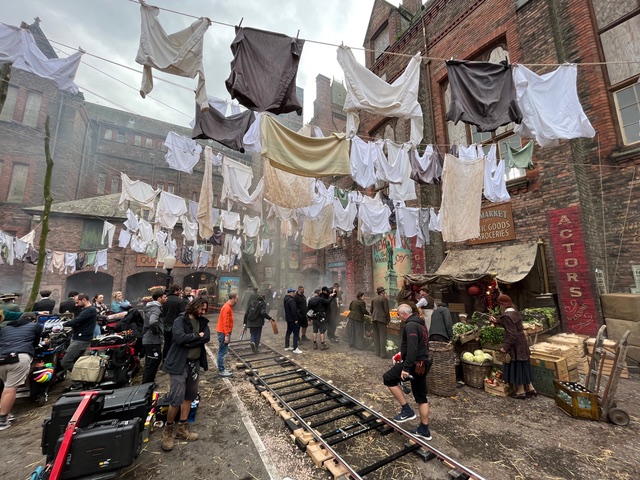
When it came to capturing the numerous time periods depicted throughout the show, De Geyter relied on using a variety of different lenses for each period. “The main difference was using super baltar for each scene where he was named Archie. In the middle of the show he becomes Cary Grant because Archie Leach in Hollywood doesn’t sound great,” De Geyter details. “I shot everything on a summilux for when he becomes Cary Grant. Summiluxes are glossy, sharp and beautiful which also represents what his character was. Everything was messy when he was young. His father left him and his mother was put in an institution. For those sequences we used the super baltar which are not so nice. They are beautiful lenses, but they have a lot of aberrations. I think that was the main difference. We also shot a lot of 8mm for when he was younger, especially as Cary Grant shot a lot of 8mm himself when he was older of his child Jennifer. We tried to reproduce that and sometimes to put the old and the young together in one image within that 8mm to connect them.”
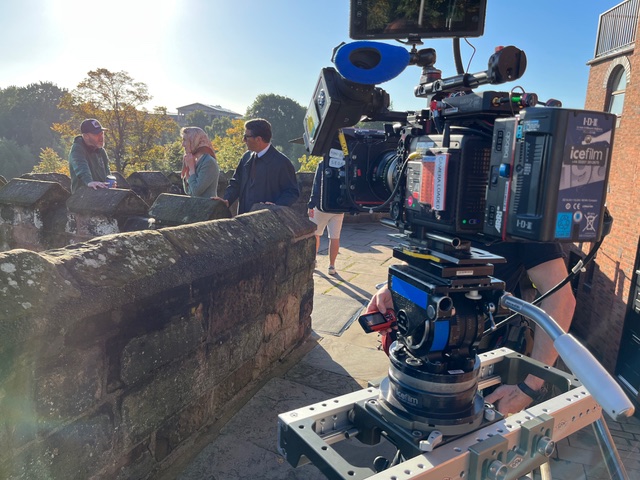
During pre-production there was a team looking for the archival footage seen in the show. “Some of it we shot ourselves,” adds De Geyter. “The archive footage came through us and was then selected. After that selection procedure it went into the edit where we could use it or not. Sometimes I’d see an edit and comment on it. Paul had a very strong opinion by that stage about what he needed and what he didn’t. Once the selection was done it was all in Paul’s hands actually. All the credit to him.”
The bedroom sequences were particularly challenging for De Geyter to realize. “I found those the hardest,” admits De Geyter. “In a way for the institution scenes there were many great elements to work with that it was in a way easier to make something good out of it, but the bedroom scenes were always against an orange wall. Storytelling wise, we had a very small set for the early New York scenes, so working some days in that very small space and afterwards in the corner where you have to give the feeling of being in New York that was difficult and we tried to make sure it didn’t look repetitive. They changed everything overnight to make it look different. All the LA stuff was easy, however, because we had great sunshine so everything looked good and the localproduction was great.”
“We had a good budget for the show and for production design and we had a great prop and set team,” De Geyter continues. We built the whole interior of Cary Grant’s LA house in a studio, with a patio and everything. We had 200Kw of sunlight outside. Locations were great and easy. I spent more time being able to do my job than trying to find locations.”
When it came to his approach to lighting the different time periods, De Geyter wanted a more realistic lighting approach to capture Cary Grant’s earlier years. “Those periods were greyer and duller,” he says. “The further we went when he became Cary Grant, we used much harder backlights. Sometimes even a light next to the camera to give the feeling of that era and how they shot movies at that time. I wouldn’t use those hard lights anywhere else other than on this show. I wouldn’t have used them either for when he was young and in those sequences. The main difference was making the light much softer when he was young and then much harder when he’s older. What I discovered during the process, is that I’m always afraid to put a light next to the camera because it makes it flat, but it was the only thing they did during that time. Hitchcock, throughout his career changed to indirect light. He was the first that tried that, but during Cary Grant’s early career it was really just placing light next to the camera. I started using it as a try out and it worked really well. It’s amazing how good people look too. Even with a hard light next to the camera. We sometimes are trapped in everything soft and perfect and then you see what they did back then. It was simple lighting and they also had to give lots of light because their filmstock wasn’t sensitive enough. Now, we are all spoiled with choices of lighting, lenses and cameras. The older I get, the more T stop I give. I would put filters in just to give me space for lighting. Capturing the films we recreated for that time were impossible to do with little lights. You need a huge, big lamp next to the camera and then put filters in front of the lenses. Then you get the effect they had at the time because of the film stocks they used. You see that working with a lot of light is miles easier than working with very little light to make it look good.”
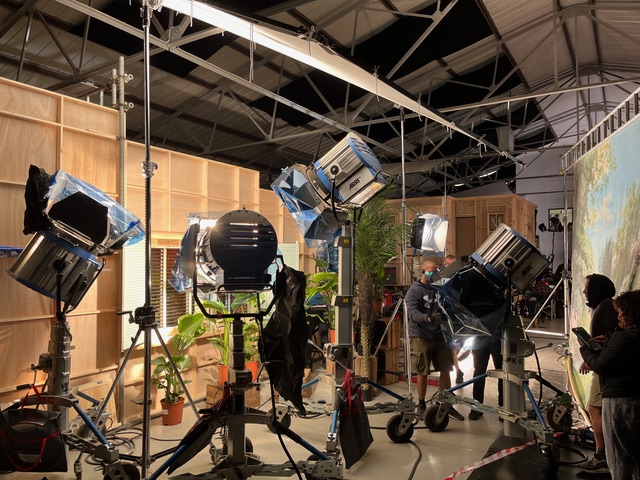
The overall shoot lasted for 50 days across the four episodes. “It wasn’t too much time and was a tight schedule,” says De Geyter. “I was often surprised how little time we had for the things that we needed to do, especially with all of the hair and make-up changes. Sometimes during the day we lost an actor for a few hours and then we’d have to find something to do during that time when the actor would change wigs. Cary Grant had maybe seven, or nine wigs throughout the show. They would get greyer and greyer. Timewise that was the most challenging getting all the actors ready to shoot. They shoot for one hour longer than in Belgium, which is good because it gives you one day extra per episode overall.”
There is also actually only one phone recording of Cary Grant, as he never gave interviews. “There is this one recording which a journalist recorded and Jason constantly listened to it to get used to his accent,” De Geyter details. “I think he was afraid to show who he really was and that’s also what we tried to portray because in the end Cary Grant was playing someone else his whole life. It must have been hard for him as he was always playing a character.”
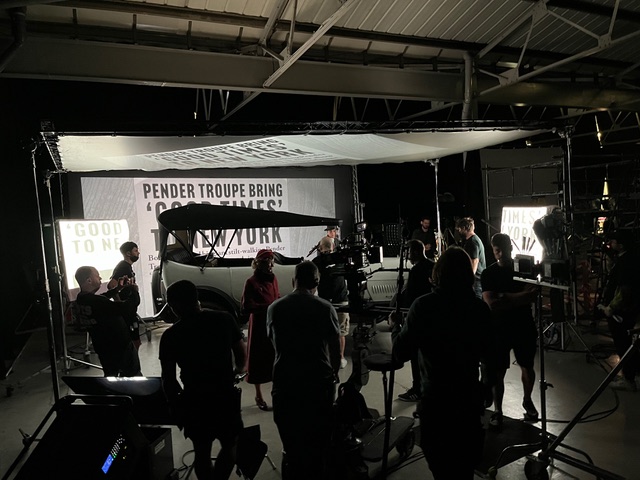
“The fact that Paul was such a hard director to communicate with in the beginning as he wanted to do it all alone, but then I saw him grow towards me was one of the elements I enjoyed most about the show. At first, he said no to all my ideas, but I ordered them anyway. I enjoyed working with Rebecca again, who I knew from before. Working with Paul by the end became very natural and fluid. Afterwards, he asked me again for his next show called Suspect, which comes out later this year, but I wasn’t available for as I need to be home with my three young children. I try to alternate between a show in the UK and Belgium,” concludes De Geyter.
Archie is available to stream on ITV X.
By Oliver Webb
